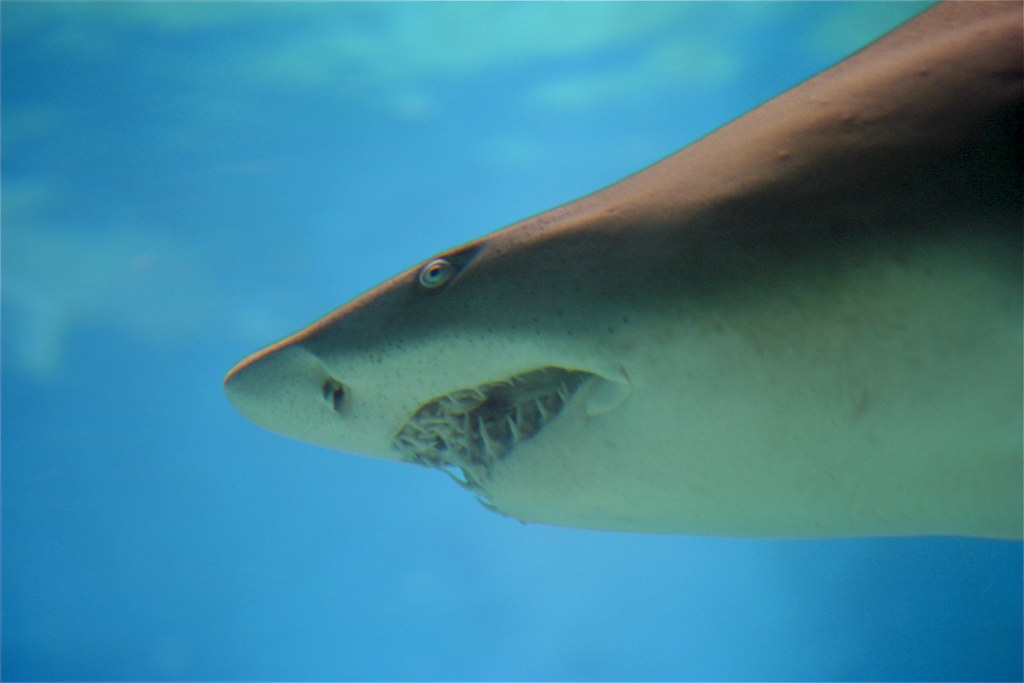All over the world, out of 500 species of sharks, there are just three species reported that are responsible for fatal attacks on humans, even being unprovoked. Did you know who they are? They are great white sharks, the tiger sharks and the core of this article – The Bull Shark! Not only human bull sharks are also in charge of biting other sharks. They were named bull sharks because of their small, blunt shaped snouts and their extreme aggressive behaviour just like the Bull! After knowing about their violent behaviour towards both sharks and humans, you will definitely be curious to know where these predatory species lived. Let’s explore in detail about their habitat and distribution.

What do they look like?
Bull sharks are different from other species of sharks because of the stout personality, short blunt snout, triangular saw-like teeth, small eyes, large triangular shaped dorsal fin without any skin ridges. They can grow in length from 7 to 11.5 feet, with a weight of 200 to 500 pounds. They are pale yellow to dark grey in colour from the upper side whereas faded white underneath.
What habitat do they share?
From coastal marine and estuarine to freshwater ecosystems, the bull sharks live in an inclusive range of habitats, it has also been recorded that they are also found swimming at the depth of 150m in the ocean. It has also been known that bull sharks are the only species of Chondrichthyes that can survive for a prolonged period of time in the freshwater habitat mostly in the Amazon River but when the breeding season arrives, they migrate towards Lake Nicaragua in Central America to breed.
Where are they distributed in the world?
All over the world, the bull sharks have been widely distributed in the shallow warm water of temperate and tropical regions. In the United States, they are found in the Eastern coastal regions and in the Gulf of Mexico from Southern California to the Gulf of California. In Australia, they cover from the South Western, Northern and Eastern coastline, Western Australia to the central coastal region of New South Wales. The bull shark has also been seen in the Atlantic Ocean, Indian Ocean, Pacific Ocean, Mississippi River, the Ganges and Brahmaputra rivers and in Lake Pontchartrain.
How long do they live?
Well! The actual surviving rate of bull sharks is largely based on their geographical zones but on an average these creepy creatures can live for about 32 years. It has been reported that the bull shark species found in the Southern Gulf of Mexico had a maximum age limit of 28 years for female and males can grow to an age of 23 years whereas the species thriving in the Northern Gulf of Mexico has a maximum age of 24.2 years for females sharks and 21.3 years for males bull sharks. Strange!
What hunting strategies do they adapt?
As bull sharks are widely distributed in the shallow and warm water of almost all the oceans in the world, they do not have any specific feeding behaviour; in fact they eat almost everything around them including dolphins, turtles, small fishes, birds, crustaceans, echinoderms, or even other sharks. Scary! Luckily, humans are not included in their menu list but they mostly thrive in the muddled water of Bays and Estuaries, usually 30 m deep from the upper shoreline and thus attack humans out of curiosity or aggressiveness.
Do bull sharks face survival threats?
Despite their aggressive behaviour, they face survival threats such as overfishing. Humans continue to fish bull sharks to great extent for the fleeces, meat and oils, due to which the number of bull sharks has been declining over the past few years. Moreover, they are also being documented as nearly threatened species because of the pollution, habitat degradation and their wide distribution in the coastal region; they are at high risk of being endangered in the coming years.
What does it conclude?
Bull sharks have been widely distributed all over the world, they are found in tropical and subtropical water in warm, shallow waters of bays, coastal regions, harbours, low salinity estuaries, lagoons, rivers, lakes and freshwater oceans. They are known for their strong sturdy appearance and extreme fierceness not only towards humans but also towards other bull sharks. Despite all this, they are at the risk of being endangered due to human activities and habitat degradation. Hoping that you have gained enough knowledge about bull sharks and their distribution, so when are you going to encounter them!







